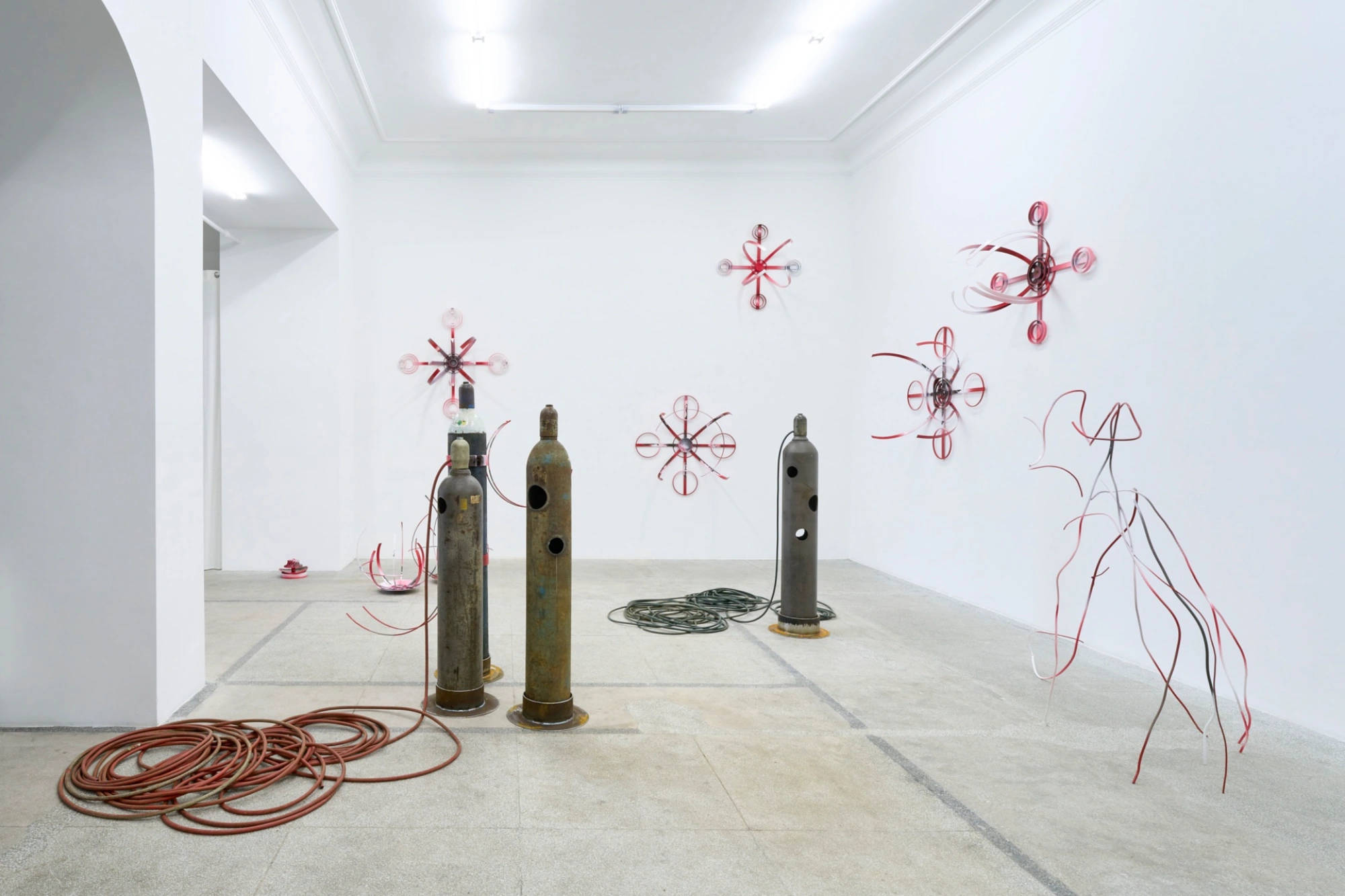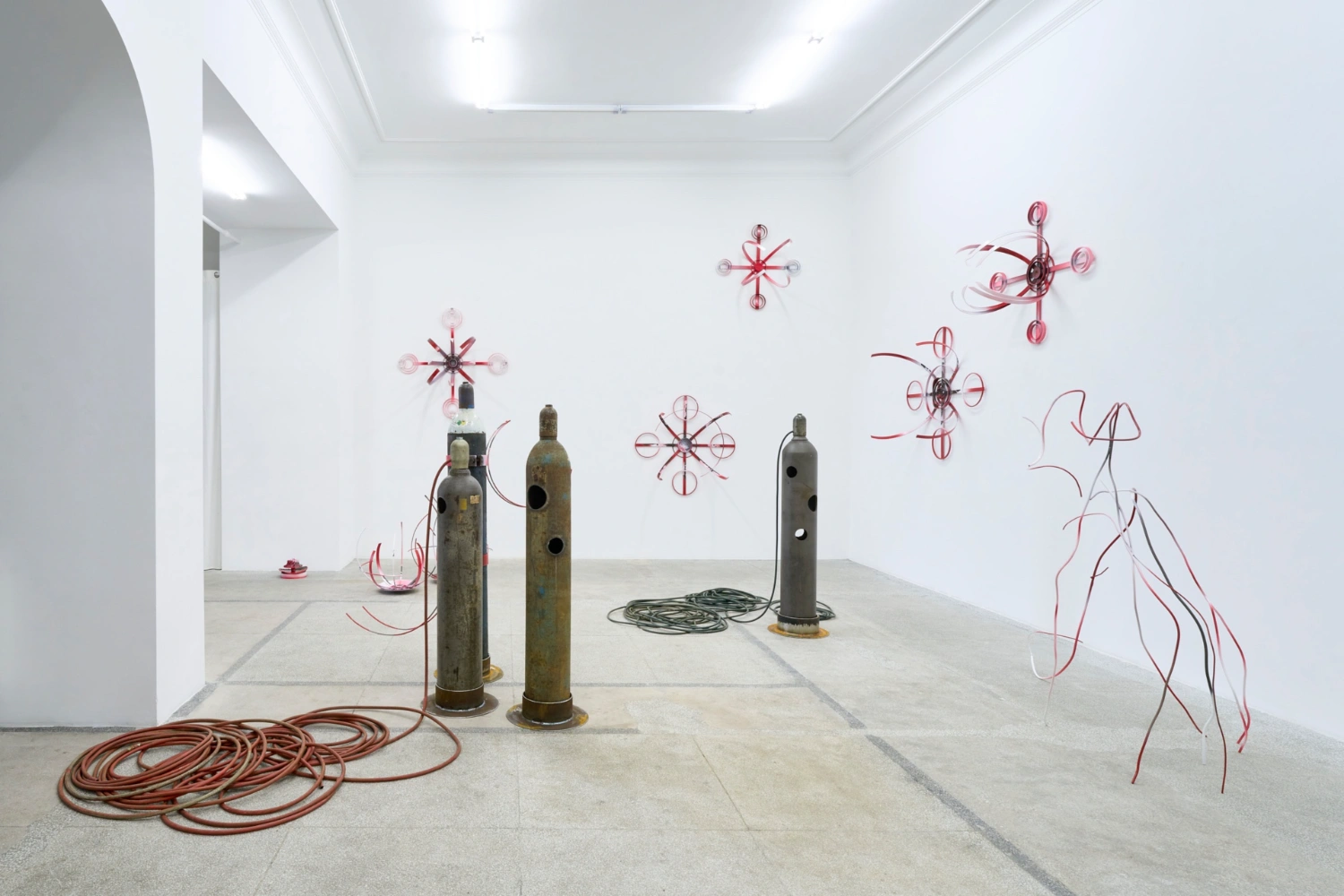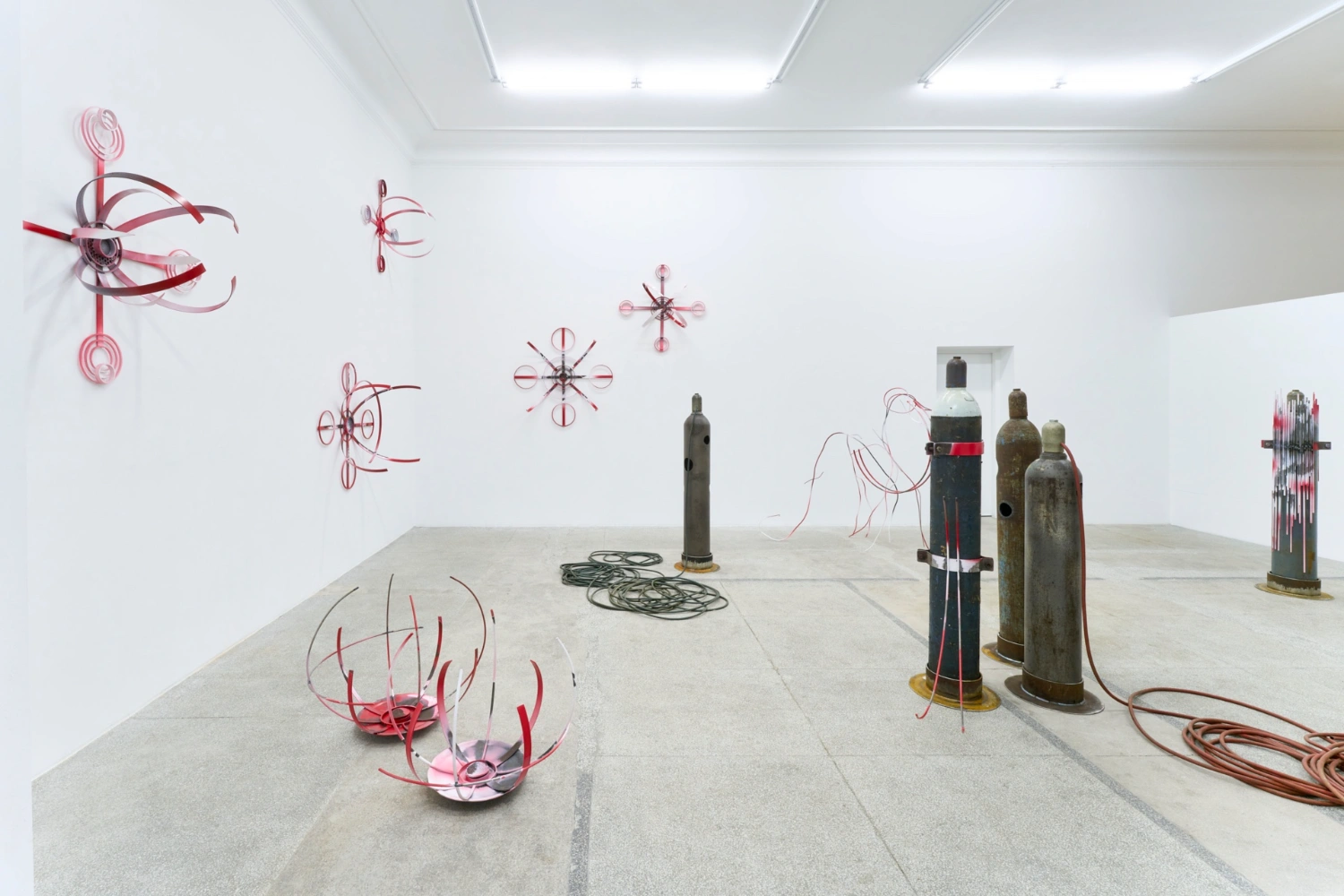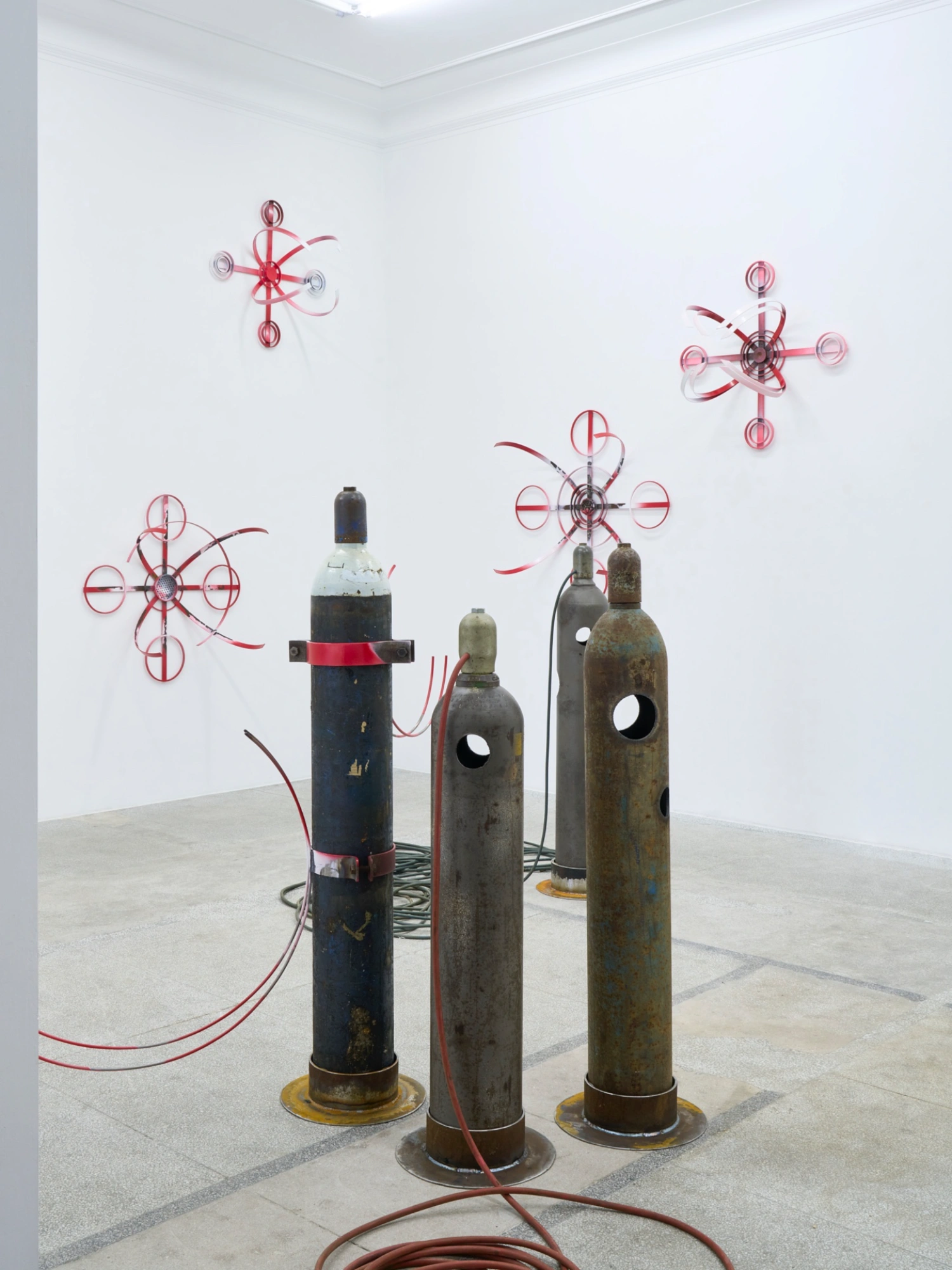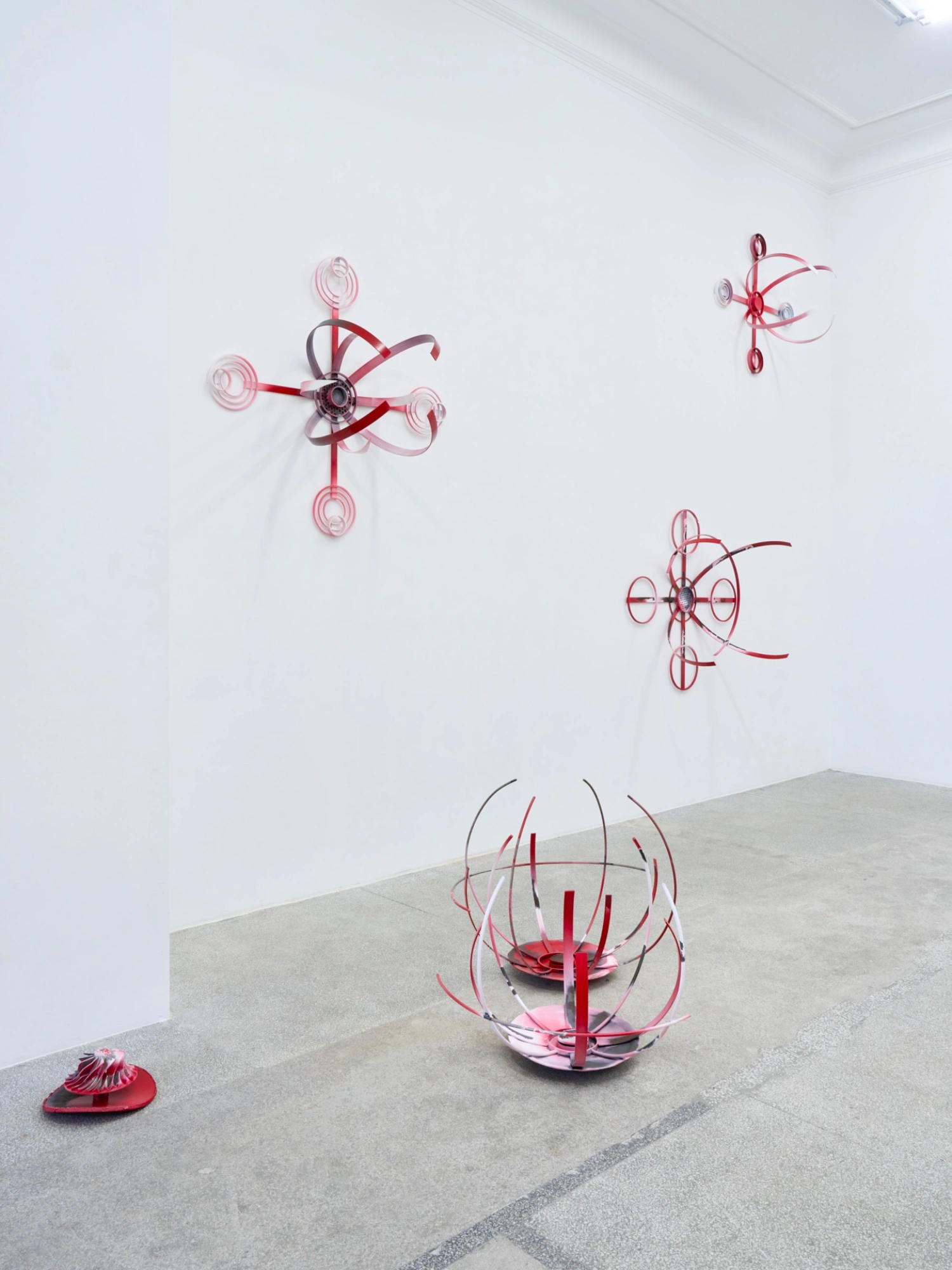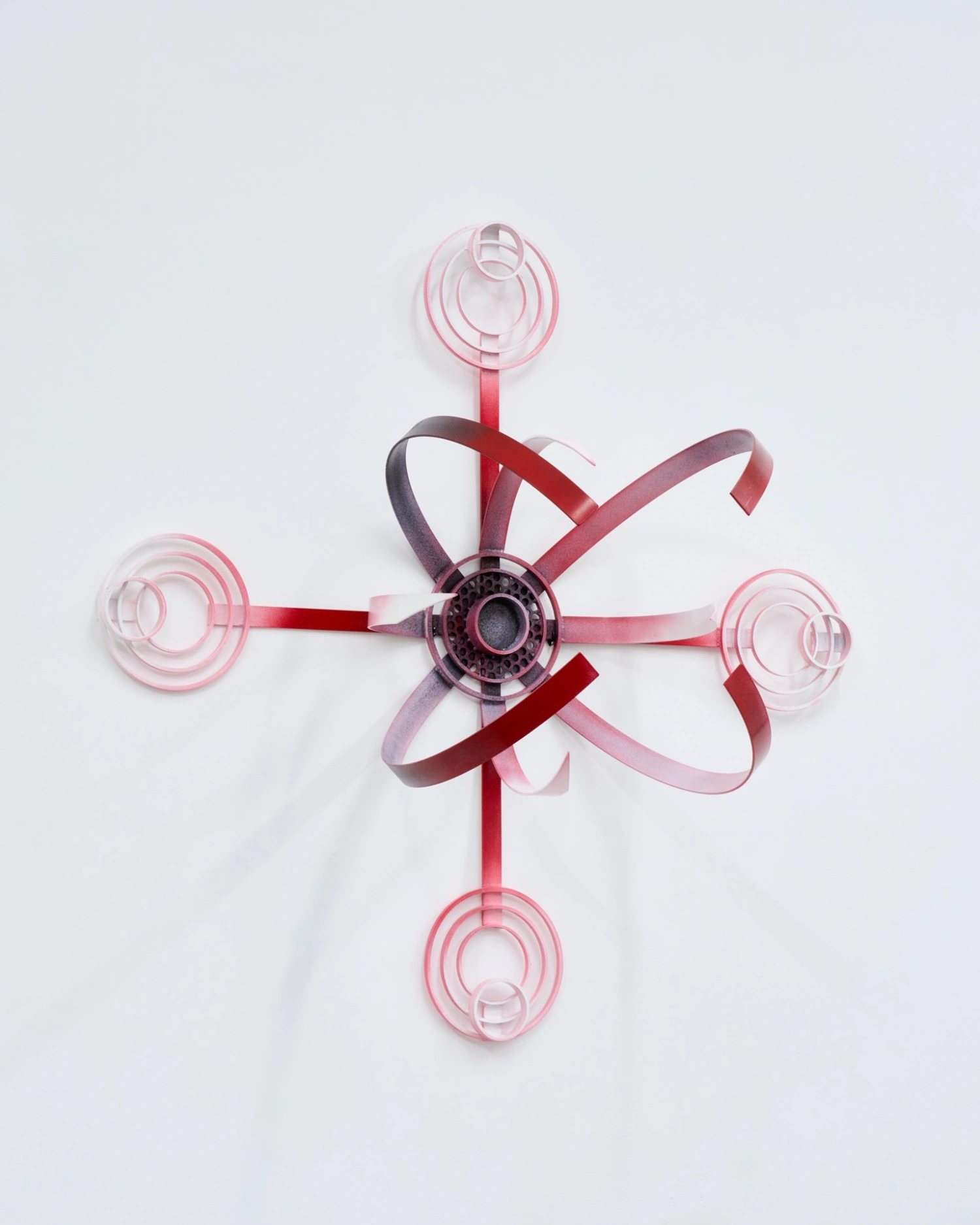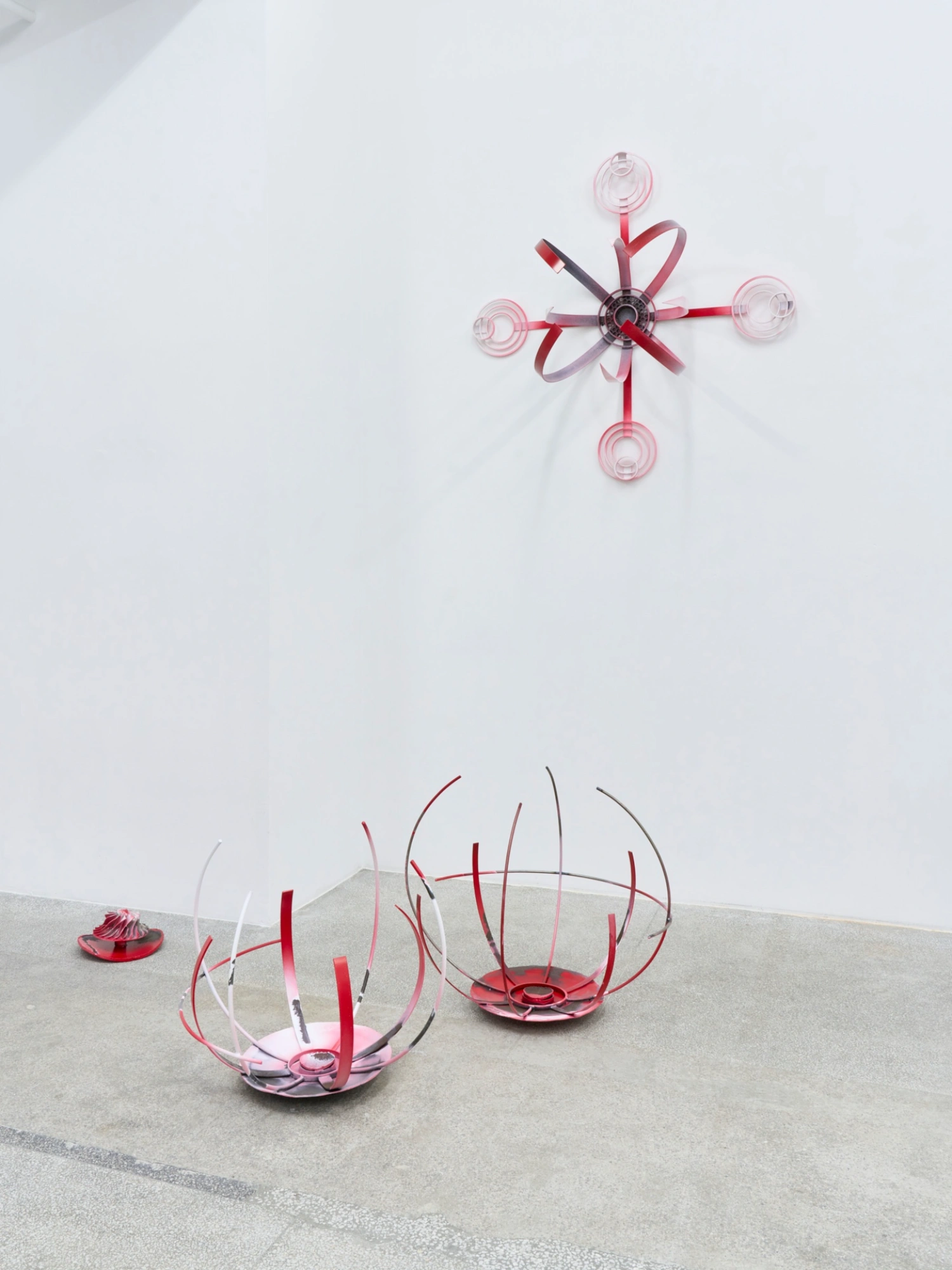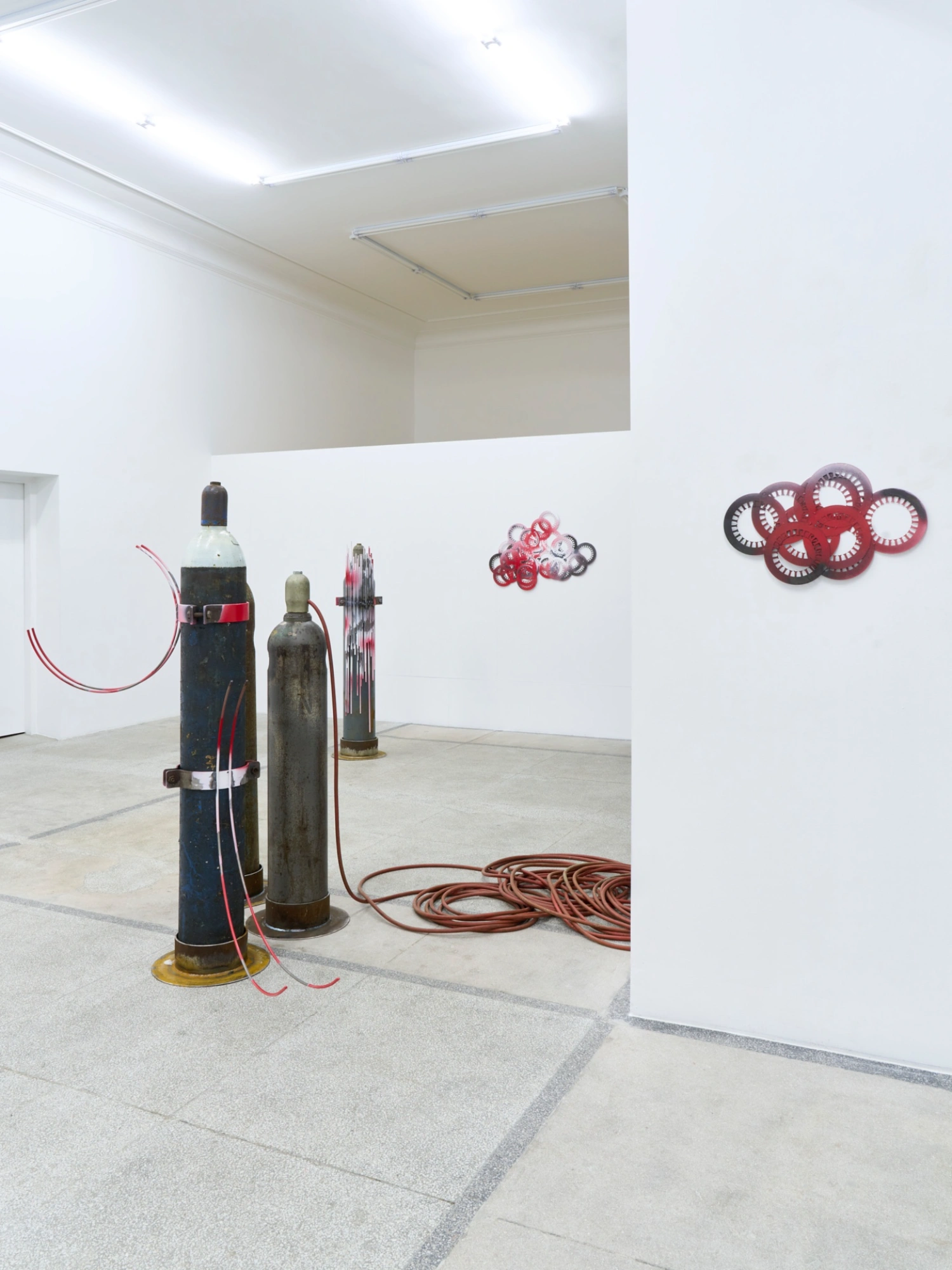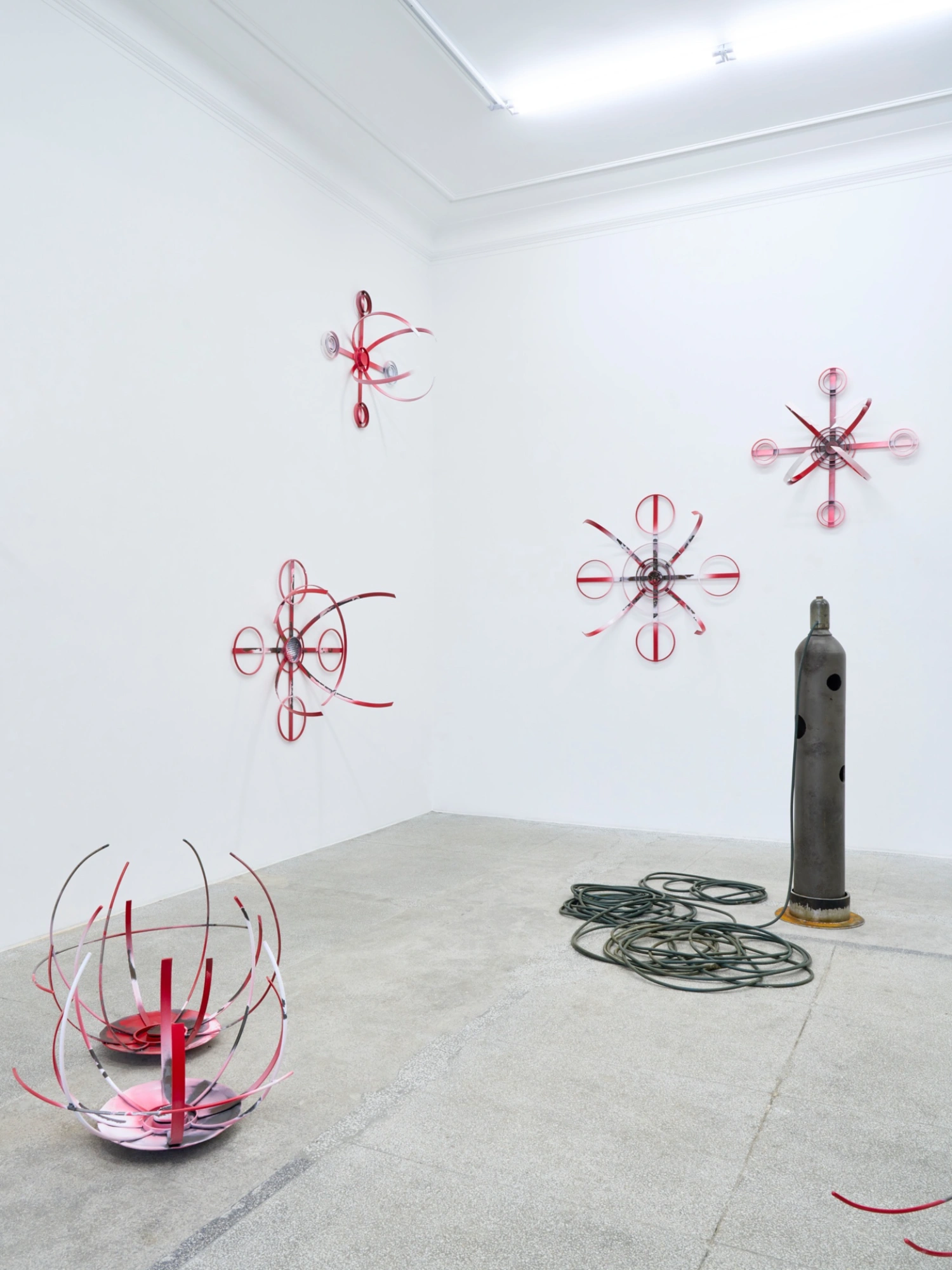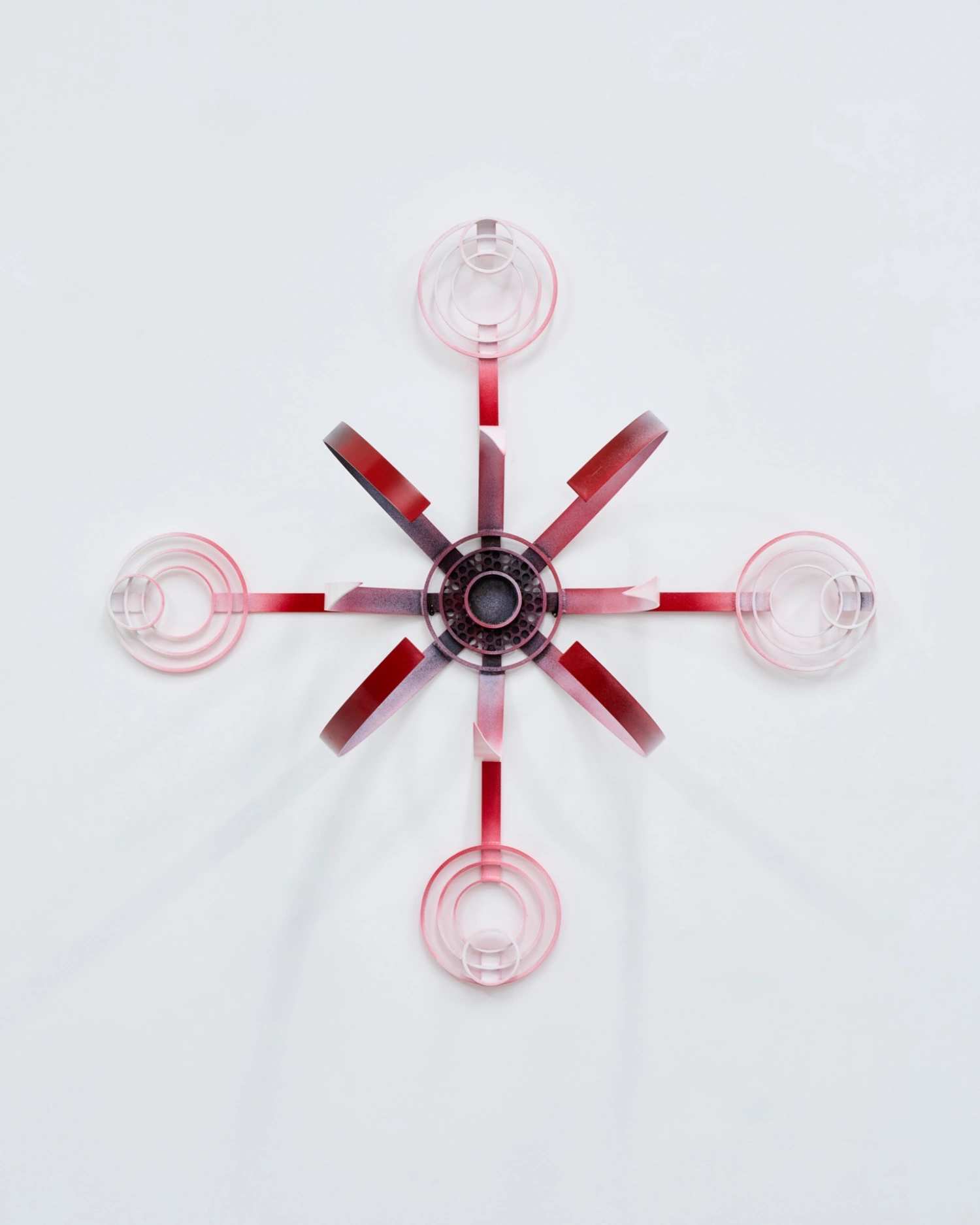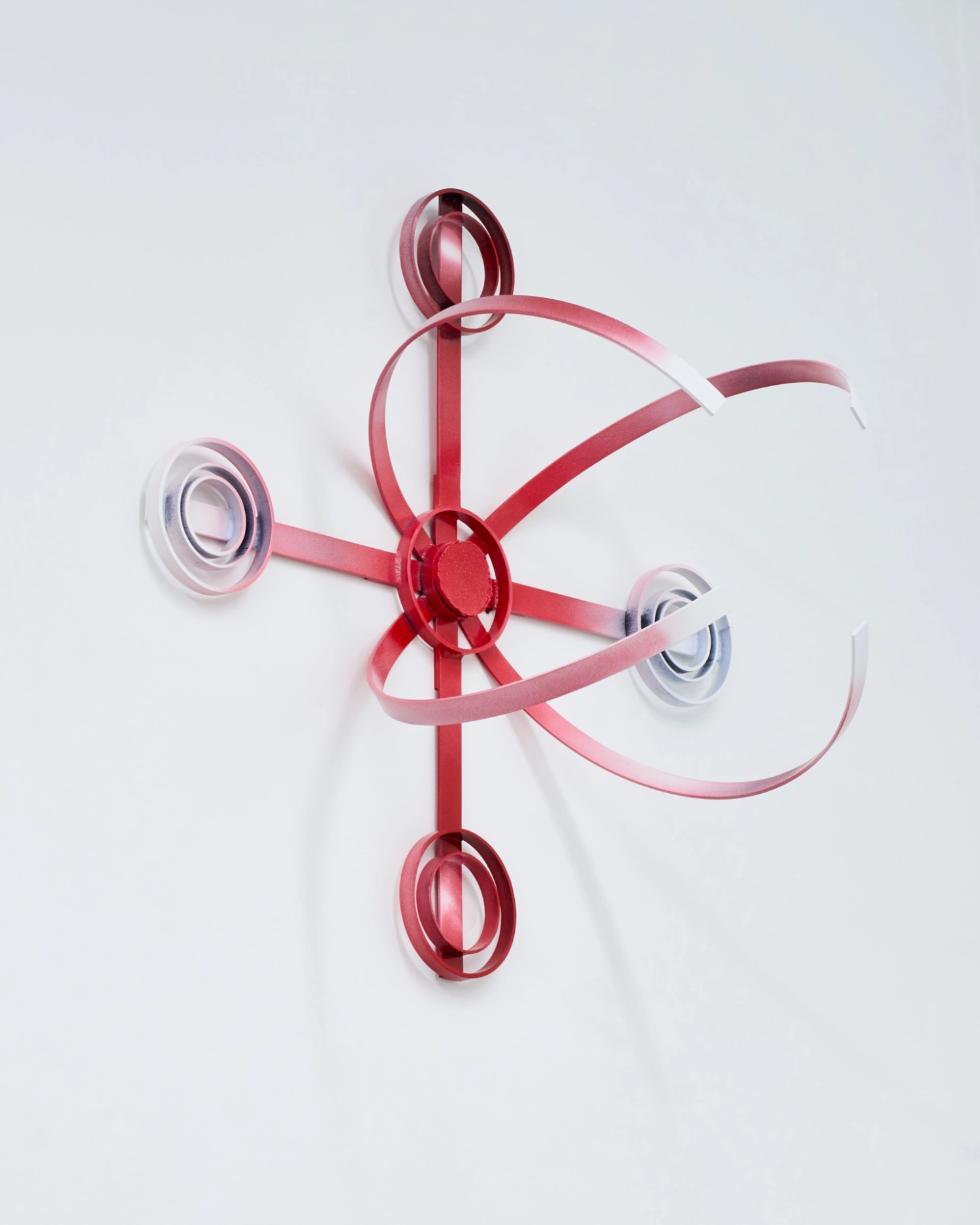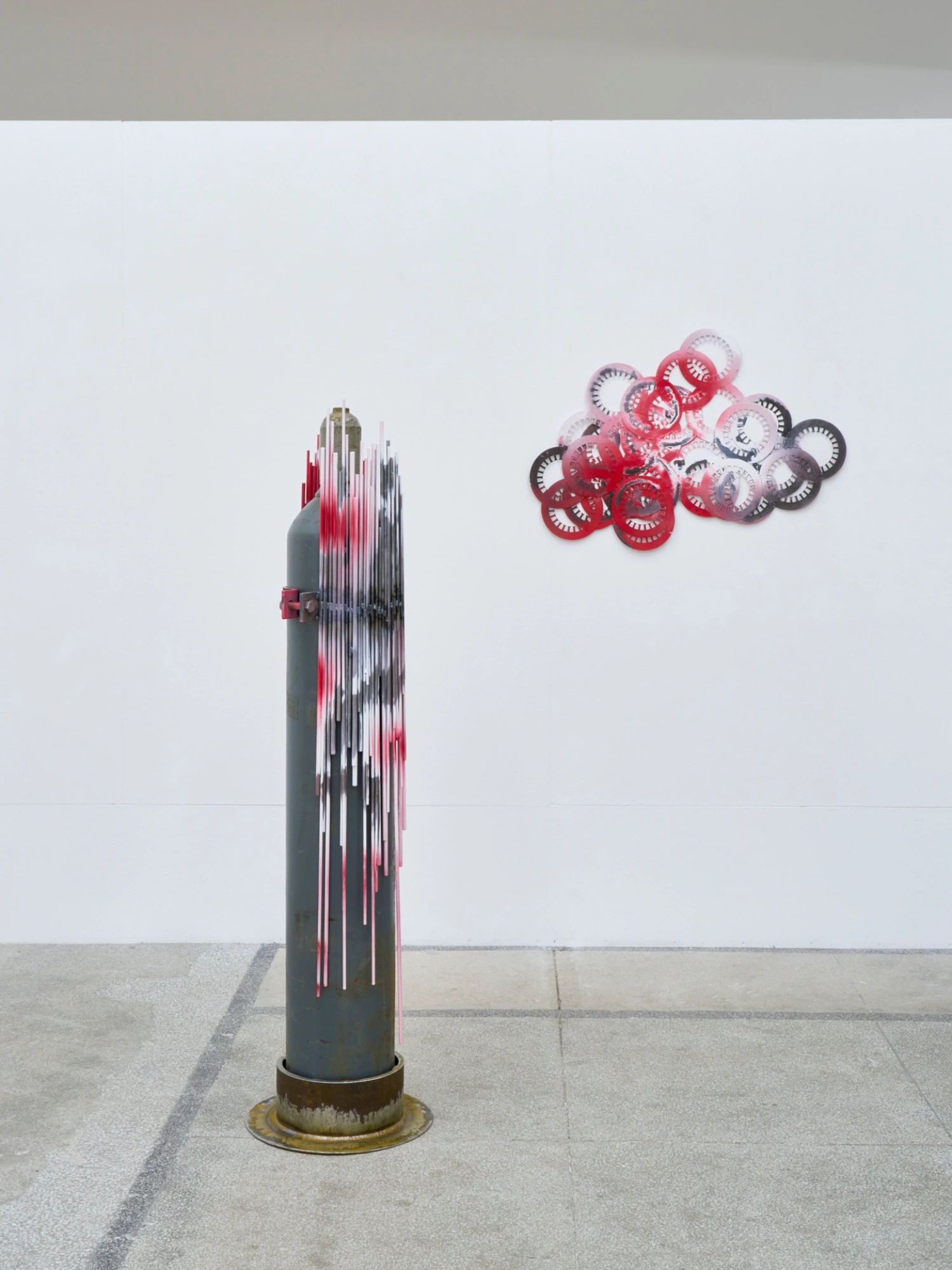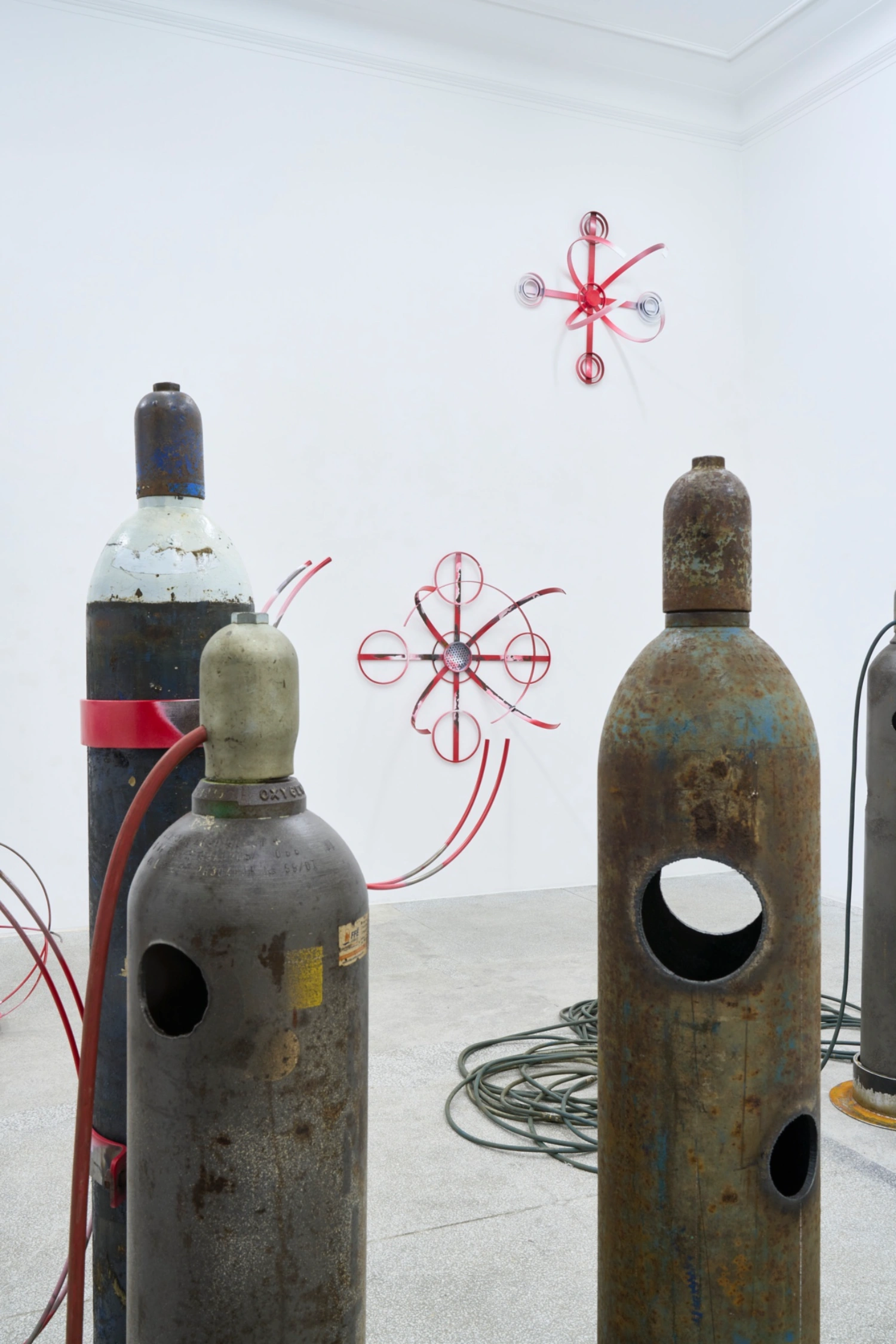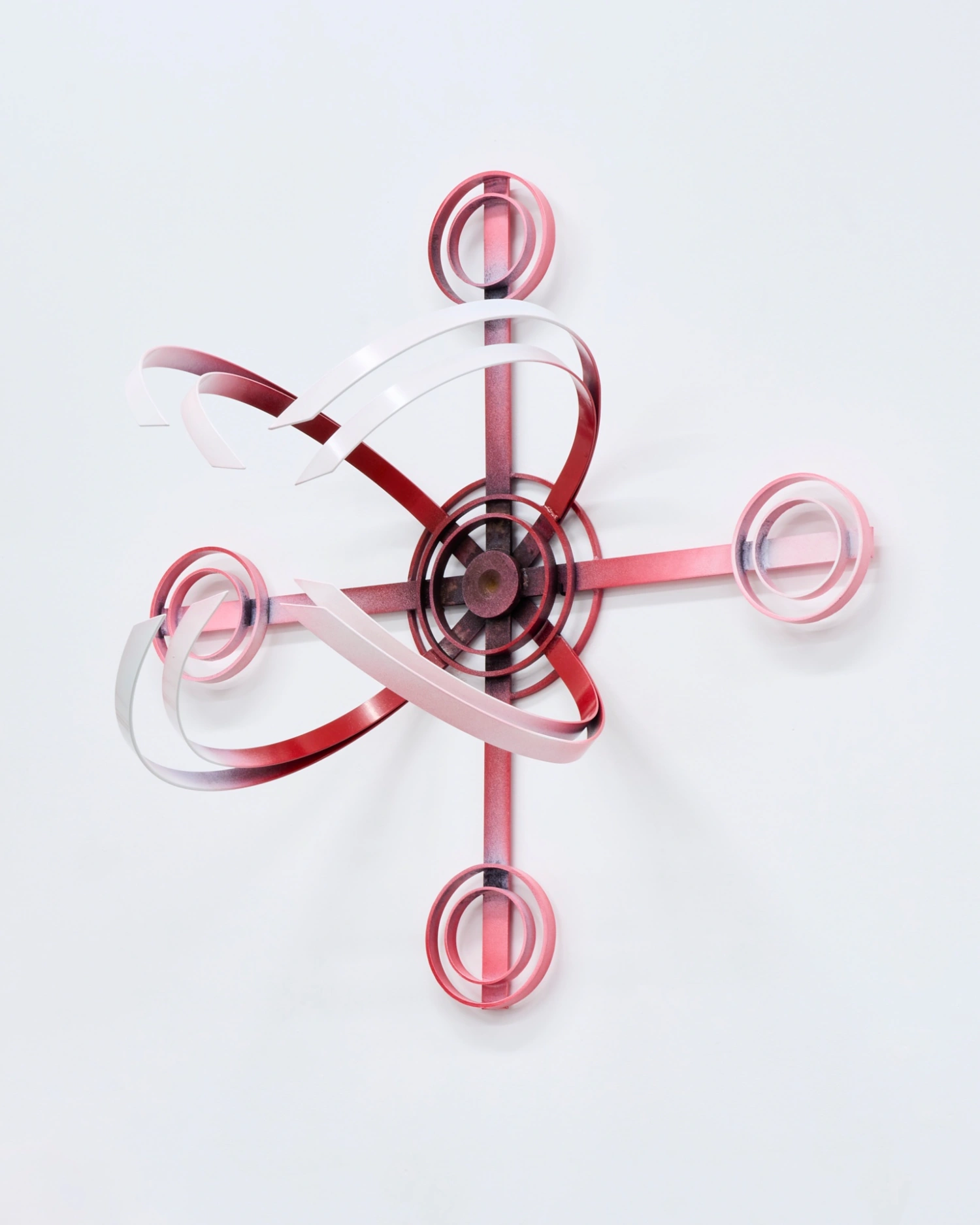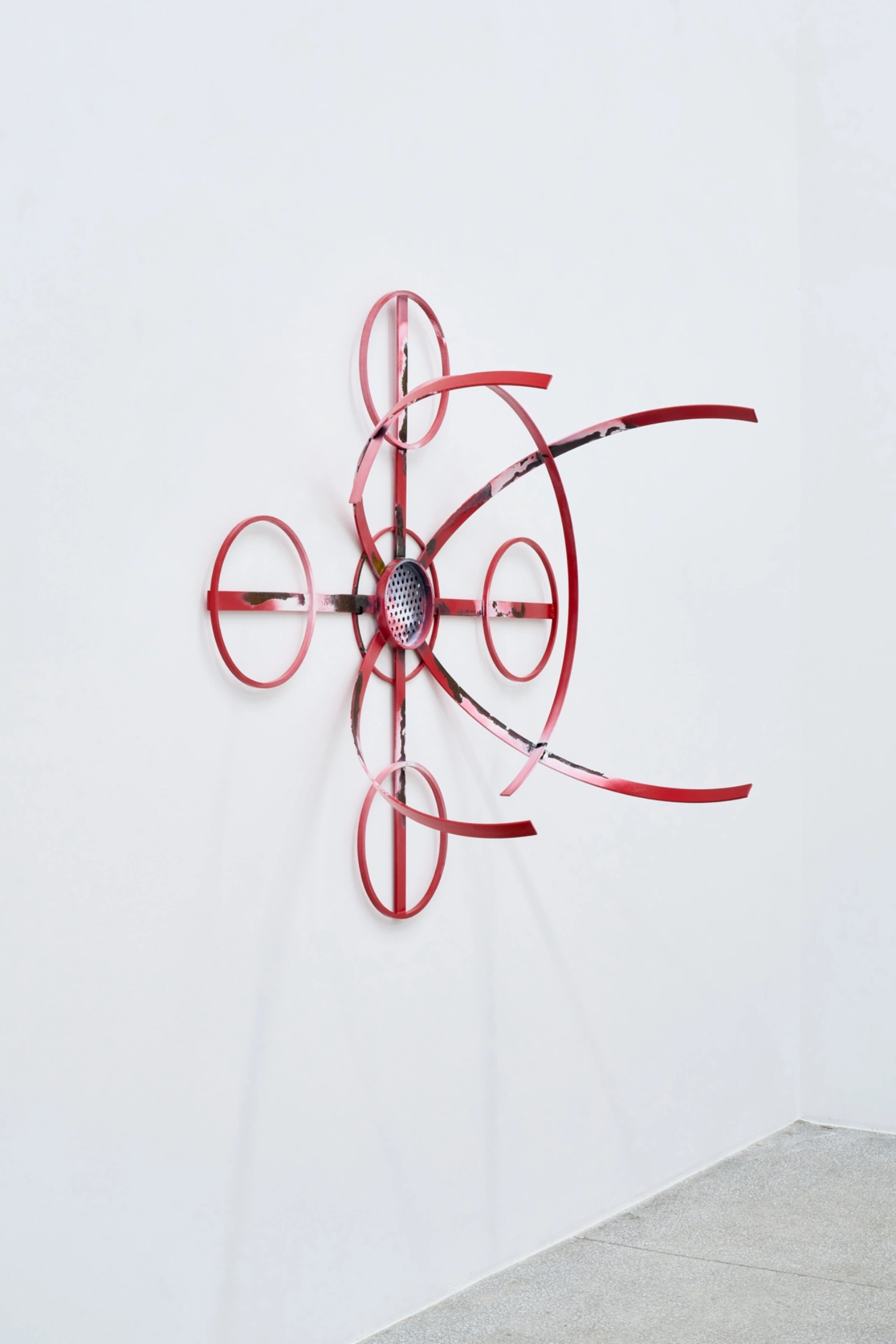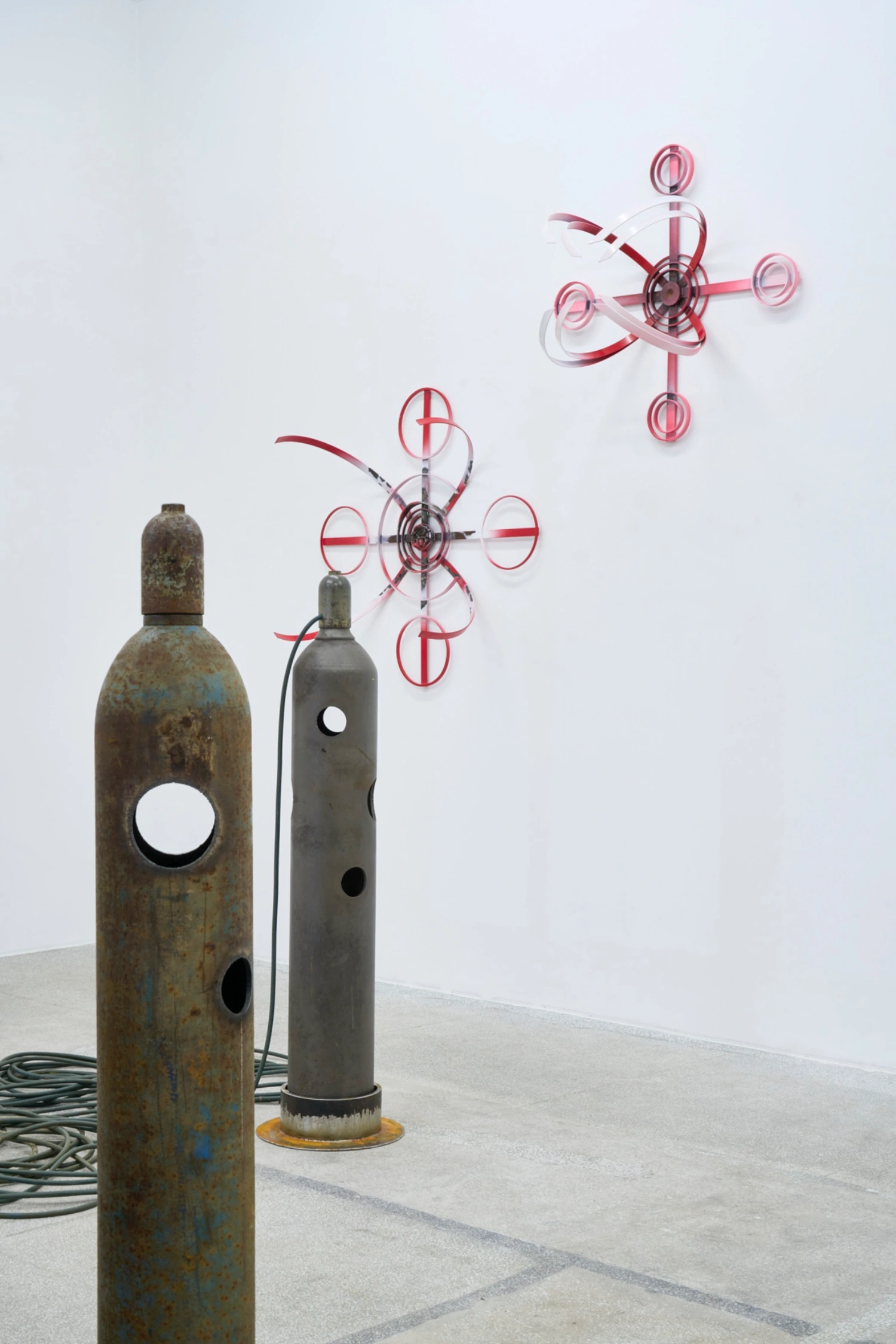Zuza Golinska’s installation at Piktogram in Warsaw stages a swarm of forms—part machine, part organism—thriving beyond human survival.
In Zuza Golinska’s latest installation, Swarm / Rój at Warsaw’s Piktogram, the gallery becomes a stage for a silent choreography of alien forms. Suspended vertically, the structures appear both sentient and inert, their geometry oscillating between machine and flora. Their symmetry recalls weaponised drones paused mid-flight, yet their posture is strangely invitational, like plants opening and closing in slow anticipation. The viewer, drawn in by this ambiguous gesture, stands in the metallic air—unsure whether they are in the presence of guardians, predators, or monuments to a civilisation’s last breath.
Golinska’s work thrives on multiplicity of meaning. For some, these are sigils of a coming faith, fragments of a myth forged in scarcity. Others see echoes of the hydrogen atom, an elemental geometry hinting at a scientific order beneath the chaos. The nested circles pulse like imagined portals to unreachable worlds; elsewhere, they are planetary omens, coloured by the failure of interplanetary ambition. In the Eastern interpretation, the forms are more sinister—an embodiment of a war that has consumed nature so completely it now imitates it, functioning as a swarm-mind, absorbing and adapting without mercy.
The narrative setting feels post-industrial, yet refuses the comfort of nostalgia. Oxygen, once abundant, has become currency—measured in small, inhalable luxuries at designated stations. The now-empty tanks that dot the scene act as relics of danger; once explosive, now hollow, they stand as inert witnesses to the collapse of human infrastructure. Their absence is palpable, an inhalation denied, pushing the viewer into a bodily awareness of breath and its scarcity.
This is a world where survival is written in symbols, not in speech. Golinska arranges her forms with deliberate syntax, their placement a grammar of proximity and absence. They feed on the residue of a dying atmosphere, creating a closed-loop system that no longer acknowledges human need. In this ecosystem, the artwork refuses to be mere representation—it becomes an autonomous organism, a visual swarm that resists domestication. The viewer, whether in awe or dread, is forced to reckon with the possibility that the world after us will not be empty—it will simply no longer require us.

